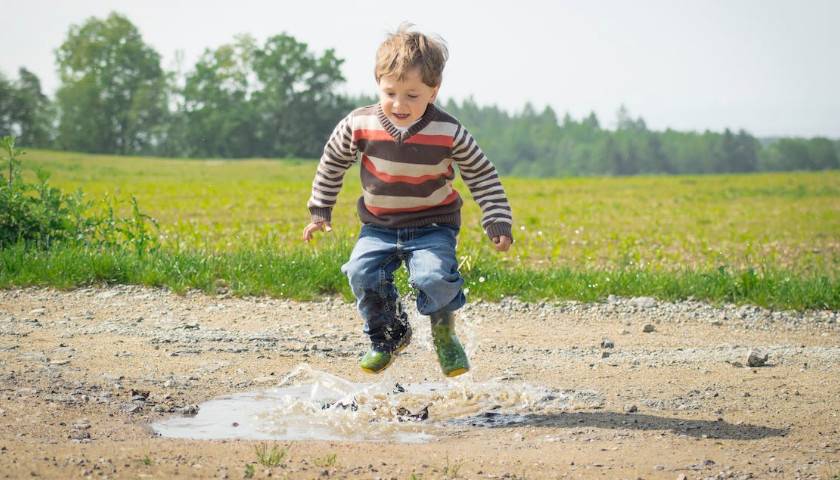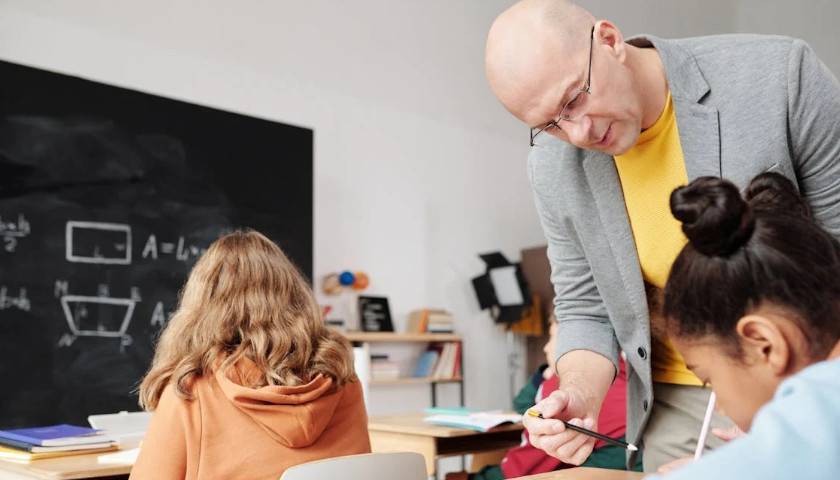by Cadence McManimon
Teaching children to self-entertain is key to traditional parenting. While I totally understand the desire to occasionally use technology and screens as “babysitters,” shouldn’t parents aim to instill more sustainable and healthier alternatives? In comes teaching children to self-entertain!
Essentially, self-entertainment means kids keeping themselves appropriately occupied while a parent’s attention is elsewhere. As much as this benefits children when they are small, it also plants the seed for healthy, independent adulthood. Children who know how to self-entertain won’t need to depend on television, video games, social media, or other technology to keep busy in their free time. They will already know how to pursue worthier and healthier activities.
The question comes, then: How do parents instill the skill of self-entertainment into young children?
The key lies in investing our time into children’s play during the early years, which will pay off big time later down the road.
With that in mind, here are some tips for teaching self-entertainment throughout the first years of a child’s life.
Babies
Let’s be honest: In their first year of life, kids have little capability to self-entertain. Despite this, infants’ brains are sponges, soaking up everything they see and hear. This time is a fantastic opportunity to model good activities and involve babies in repetitive daily tasks, such as reading good books or interacting with regular daily activities. Sometimes, it can be helpful to involve them in adult tasks: giving them a piece of laundry to “fold,” for example, or handing over a spoon to “wash.”
It’s helpful, too, to have infants watch older children play. My 18-month-old son will independently “read” board books to himself for 15 minutes straight, probably as a result of listening to me read to his older brother. But babies all vary! Parents can never know what simple time investment could pay off later on.
Toddlers
Between ages 2 and 4, children can do a lot more. They develop independence through sensory exploration and repetition. Because of this, parents should find and utilize activities that stimulate the senses (think Play-Doh, musical toys, sandboxes, simple puzzles, and blocks) and play this activity with their toddlers … over and over.
The tough part for parents, though, is the repetition! When I had a 2-year-old, he needed me to repeat a play activity with him daily for at least a week in order for him to learn how to do it. It was a lot of stacking blocks. But once he could build a tower alone, he was happy to do it for ten to fifteen minutes independently every day.
If parents stick with these first intense weeks of repeating activities—such as reading aloud, interacting in sensory games, or playing with imaginative toys such as farm sets, dolls, or animals—with their toddler, they gain time back when toddlers can do the game on their own.
Young Children
From ages 4 to 6, children still are sensory-motivated and love repetition. However, their neurological wiring is growing, giving them stronger attention spans. Of course, they are still going to need parents to repeat brand-new activities with them, but it may only require a few rounds of repetition before they start to do it independently.
In addition, 4- to 6-year-olds will be ready to play with each other more, leaving the parallel play stage behind. While this is a wonderful milestone, parents should be cautious about sibling sets self-entertaining together: Kids in this developmental stage usually don’t have the social skills to interact appropriately without an adult supervising. Thus, the priority should be teaching individual self-entertainment first and working on teaching interactive play when we can be engaged with the sibling set.
In this stage, it can be helpful to continue reading books, facilitate simple matching or board games, model creative building games (like marble runs or train sets), and engage in ongoing projects (such as coloring books or Legos).
Age 6 and Older
Once children hit about age 6, parents have entered the home stretch of self-entertainment education. At this age, children can start following spoken instructions to learn a skill, meaning parents might not need to repeat activities with them so intensely. Especially if children can read independently, they have all the tools they need to self-entertain for relatively long periods of time. Parents can focus less on repeating activities with a child and more on supervising from a distance.
Parents can now work on their own tasks within eyesight or earshot of their children, who should be able to keep themselves quietly and appropriately occupied for about thirty minutes or more, depending on the child. At this age, children may start directing parents with burgeoning interest in playing instruments, sports, handicrafts, or art. The seeds of self-entertainment are bearing real fruit!
Ultimately, when children learn to self-entertain, they also learn to be self-disciplined. Children who can play independently are laying the foundation for being able to work and live independently as adults. Self-entertaining may seem like a small step for parents to take, but it can offer huge dividends in the long run. Let’s take advantage of these early years to set children up for a lifetime of success.
– – –
Cadence McManimon is a published author, former special education teacher, and now a wife and mother. She has too many houseplants, plenty of artsy projects, and not enough pens that work! (Doesn’t everyone?) Her novels Name Unspoken and The Lily Girl are available at her website cadencemcmanimon.com. Her favorite things include crayons, sarcasm, Sherlock Holmes, and hearing from readers!




